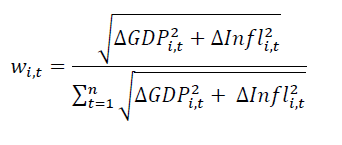The resilience of fixed income is perhaps a consequence of equities’ poor performance. Stagflationary episodes can be particularly brutal to equity investors, who have historically seen the worst average returns during these phases, squeezed by rising costs and falling revenues. The numbers bear this out, with both the S&P 500 and MSCI EAFE indices (developed markets ex North America) falling an annualised average of 6.6% and 11.6% respectively during periods of stagflation since Q1 1973. However, there are clear variations within equity indices. The shift from discretionary spending to staples spending has benefited the latter: US staples achieved an AAAR of 7.9% compared with declines of 1.3% for consumer discretionary .7
Real assets do well during stagflation, with commodities both fuelling and feeding off inflation, while gold has tended to benefit from the elevated risk environment, rising inflation, and a lowering of real interest rates. Gold’s strong returns come despite a stronger US dollar typically seen during stagflation.
The 1970s probably have an outsized impact on the results from the full period analysis. Since then, we have not experienced similar levels of stagflation. Even considering less extreme incidences, the performance of gold and other asset classes is broadly consistent with what we’ve seen during severe episodes.
How have assets fared over the past 20 years?
Over a 20-year horizon, gold along with global broad bond indices and inflation-linked bonds are the only asset classes to provide positive returns across all four economic scenarios. However, gold’s annualised average weighted returns in US dollar are superior and in many cases more than double that of bonds.
Meanwhile, equities continue to perform poorly, even during these milder episodes. Emerging market equities, small-cap and growth stocks fare the worst, likely a reflection of a stronger US dollar and a faster pace of policy rate hikes typically seen during a stagflation.8
History may rhyme but not repeat
If stagflation appears, analysts’ consensus suggests it could be short-lived. Q4 2021 real GDP is expected to accelerate once more as slowing delta variant infections and pent-up demand support economic growth.9
Yet, prices are expected to remain sticky with the supply logjam unlikely to be resolved any time soon. If the consensus is right, these developments suggest the resumption of a reflationary environment in Q4 2021, where both inflationary pressures and growth are present.
A reflation has tended to be positive for risk assets, with commodities and equities historically being the best performing asset classes. Gold performs well too, with an AAAR of 17.7% during reflationary periods in the last 20 years. On the other hand, a reflationary environment is typically challenging for US Treasuries, which have only seen returns of 0.96% on average over a similar period.
We wondered how likely it is, based on historical data, that a reflation follows a stagflation. Our analysis suggests overwhelmingly that stagflations occur after and before – read ‘during’ – deflations. Of the 68 quarters that we classed as stagflationary, 46% were preceded by deflations and 64% were succeeded by them. Only 21% and 18% respectively were reflations. And only once when a stagflation was preceded by a reflation – as we have experienced today – was it succeeded by one (Q4 1988).
But we caution on projecting purely on the basis of historical evidence. A few things are likely different today and worth noting as the current environment develops:
Asset performance prior to stagflation – We highlighted in a blog earlier this year how gold has historically lagged commodities in a reflationary environment. We put much of that down to its generally positive performance prior to a reflation – and how that may cause some demand exhaustion leading into a reflation.
We defined reflations as recoveries from a down-turn, so gold’s safe-haven status has generally benefited its return profile prior to reflations. It is partly this, in our view, that has historically hampered its initial response during reflations as other commodities have soared. So how does this approach look in stagflations? Gold has certainly lagged the commodity complex since the reflation that began after the first COVID-19 lockdown. But over a three-year period, gold’s performance has been strong, having averaged US$1,800 in 2021 – 42% higher than the 2018 average of US$1,269. Could this strength be a headwind even if stagflation materialises? Taking the three-year annualised performance prior to the start of a previous stagflationary period, gold has shown a mixed response with a slight positive bias. In other words, gold’s prior performance hasn’t historically been a problem (Chart 5). But if gold is to be hampered by its performance over the last three years, then the same impact might be seen in other assets, where returns have been equally strong.10

